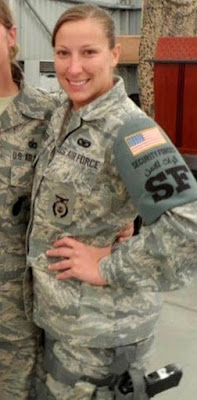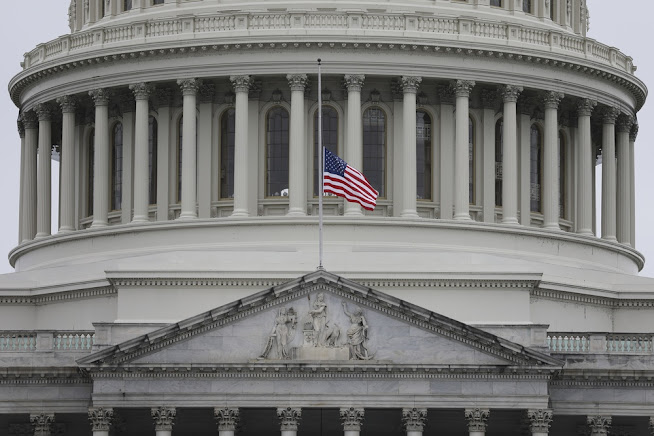Review by Bill Doughty––
“Wildland” by Evan Osnos (Farrar, Straus, and Giraux, 2021) is a deceptively easy-to-read roadmap of a book, a journalist’s journey to three hometowns to discover the reasons for the rifts that rend American culture today.
Osnos takes readers with him to Clarksburg, West Virginia; Chicago; and Greenwich, Connecticut. We meet people in poor and rich neighborhoods, and we learn about the history of discontent and division that has been driving our politics. Sounds simple, but this is a powerful and necessary book.
Clearly, the most poignant story in this book is about former U.S. Marine Sidney Muller and his fellow West Virginian battle buddy Herman Lubbe. They served together in Sangin, Afghanistan, and their ordeals and near-death experiences are vividly portrayed in Chapter eight, “Getting Loaded.”
 |
U.S. Marines with 1st Squad, 3rd Platoon, Bravo Company, 1st Battalion, 7th Marine Regiment, Regimental Combat Team 6, conduct a security patrol in Sangin, Helmand province, Afghanistan, Sept. 9, 2012. (DVIDS)
For Lubbe, life changed forever in the spring of 2011, midway through the 20-year war in Afghanistan.
“Lubbe was on patrol when a marine near him stepped on a bomb the tore off his legs from the thigh down. In the chaos after the explosion, Lubbe crouched over the stricken marine and started to light a smoke grenade that might be able to guide an incoming helicopter. That’s when another marine stepped on another IED. This second blast blew Lubbe into the air. When he landed, he felt a wave of pain and heat settle, like a blanket, across his face. The explosion had torn open his chin and nearly amputated his right ear. Down below, his legs were a tangle of broken bones and flesh. A lieutenant crouched over him. Lubbe pleaded for morphine, and then blacked out. He spent the next two years at Walter Reed Medical Center. Doctors repaired his face and ear, and mended his legs. He learned to walk again. He felt lucky; most of his fellow patients had no legs.”
For Muller, life changed forever after he left the Marine Corps, when he suffered PTSD –– anxiety, insomnia, and anger-control issues.
Muller abused alcohol and pills. He took opioids, such as Percocet, and drank bottles of prescription cough syrup. He lost his driver’s license and opportunities for jobs. “He had come to believe his mistake was not joining the Marines, but leaving them,” Osnos writes.
Osnos reports the horrific details –– as only a journalist can, of what came next in Muller’s life, including four murders. And he adds context in a heartbreaking wake of destruction: “It turned it over in my mind for a long time, considering the sheer waste of it all…”
“When Muller unraveled, nobody caught him –– not his family, his hometown, or his country. It was a conspiracy of failures.”
Osnos explores other failures, too, in “Wildland”: the failure of the coal industry in West Virginia to protect the environment and provide a sustainable economy; the failure of Chicago to deal with guns and violent crime on its streets; and the failure of Greenwich, like a lot of communities, to deal with inequality, corruption, and housing problems. Failures of unfulfilled promises.
Out of the failures arose a feeling of fear, suspicion, and even persecution that connects some areas of the country. “Black Chicagoans and white Appalachians had come to share a sensation that was calcifying in America’s political culture –– a feeling of being trapped by an undertow of economics and history of being ill-served by institutions, of being estranged from a political machinery that was refined, above all, to serve itself.”
Self-serving politicians are then attracted to any means to stay in power, which is alarming to anyone committed to supporting and protecting the Constitution. “Compromise” and “cooperation” become dirty words. Norms and ethics are thrown out. Democracy is subverted, and tyranny is embraced.
Osnos’s journey is bookended primarily by two attacks: September 11, 2001 and January 6, 2021. But he also takes a winding road through history to examine potholes that slow progress and grow division, including: Barry Goldwater, Tea Party, Pat Buchanan, Rodney King riots, NRA, Confederate monuments, Birtherism, police shootings, Kanye West, and the Covid pandemic.
The pandemic caused people to choose sides: science, masks, and vaccines on one side –– conspiracies, misinformation, and disinformation on the other side. “The fault lines in America’s political coherence, which had been expanded for years, broke wide open,” Osnos says. Compared to 9/11, “American unity had given way to bitter rivalries …”
Violent rhetoric by politicians, including President Trump, became normalized.
The election of President Joe Biden in 2020 was verified by election officials, certified by the states, recognized by the courts, and confirmed by Attorney General Bill Barr and other Republican and Democratic leaders. But not by Trump, who called his supporters from across the nation to Washington D.C. and directed them toward the Capitol, saying, “If you don’t fight like hell, you’re not going to have a country at all.” Osnos notes that Trump used the word “fight” twenty times in his remarks on the morning of Jan. 6.
Thousands of Trump supporters, some carrying Confederate flags, assaulted the Capitol and attempted a coup. They erected a gallows and hanging rope. They called for Speaker of the House Nancy Pelosi’s head and trashed her office. And they searched for Vice President Pence, shouting “Hang Mike Pence!” They injured and killed Capitol Police officers.
Osnos was there.
In his superb reporter’s voice, he speaks with some of the rioters and then explains in “Wildland” both their actions and their motives, using their own words. He asks them where they get their information. He asked them about their die-hard support for Trump. One person he spoke with was Stacie Dunbar of Seneca Missouri, who said, “I did this for my kids. I have a son in the Navy, and Trump’s done more for the military than any president ever has.”
 |
| Babbitt |
“Babbitt’s fortunes had followed the course of the country’s. In 2002, after graduating from high school, she had been drawn to the military, much as Sidney Muller had, in pursuit of a purpose larger than herself. Babbitt enlisted in the Air Force and was assigned to guard the gates at air bases around the world. She served in Afghanistan, Iraq, and the United Arab Emirates. She was discharged in 2016… her debts piled up.
“As her financial life deteriorated, she poured more of her energy into politics. She filled her social-media channels with paeans to QAnon and Trump, and rants against immigration, drugs, and Democrats…
“In its particulars, Ashlii Babbitt’s life was an uncanny reflection of the population that stormed the Capitol the day. After police had arrested more than a hundred of them, patterns emerged. Nearly 20 percent had served in the military, according to an analysis by NPR. And nearly 60 percent had a history of financial trouble…”
(A more recent study by George Washington University shows that the number of active duty service members and veterans is closer to 12 percent, but the study shows other troubling information related to the U.S. military and extremist groups, as reported by Military Times.)
 |
| Lincoln and Seward |
“When I paused to consider just how far the coup progressed,” Osnos says, “it often put me in mind of an observation from the Civil War by Abraham Lincoln’s Secretary of State, William Seward: ‘There was always just enough virtue in this republic to save it; sometimes none to spare.’”
People who love good books will be pleased with some of Osnos’s references, many touching on the rise of autocracy and threat of tyranny –– works by: Hannah Arendt, Anne Applebaum, Phil Klay, Susan Jacoby, Rick Perlstein, Norman Mailer, Martha Nussbaum, Joanne B. Freeman, and Wendell Berry.
 |
U.S. Marine Corps veteran 2nd Lt. Phil Klay, signs his book 'Redeployment' as fans bring the book to him at the Marine Corps Exchange aboard Marine Corps Base Quantico, Va., March 11, 2015. Klay’s book offers a dozen short stories based on the perspectives and views of Iraq veterans. (LCpl. Nathaniel S. McAllister)
These authors will help anyone have the widest possible rear-view mirror to see the road we’ve been on toward division in our country, up to and including the attempted coup of 1/6. They also give hope and inspiration to patriots dedicated to defending the Constitution.
Evan Osnos has written a compelling work of contemporary and contextual history in “Wildland: The Making of America’s Fury” to help us get to a final destination of understanding –– and accountability.
Top photo: The U.S. Flag at the Capitol building flies at half-staff for fallen Capitol Police officer Brian Sicknick, Jan. 11, 2021. Sicknick sacrificed his life to protect members of Congress during the insurrection at the Capitol on Jan. 6, 2021. (U.S. Air National Guard photo by Staff Sgt. Devlin Drew)




No comments:
Post a Comment